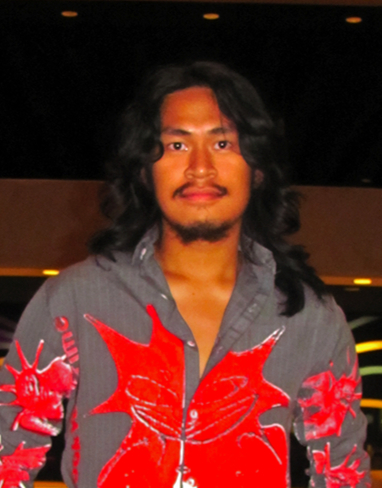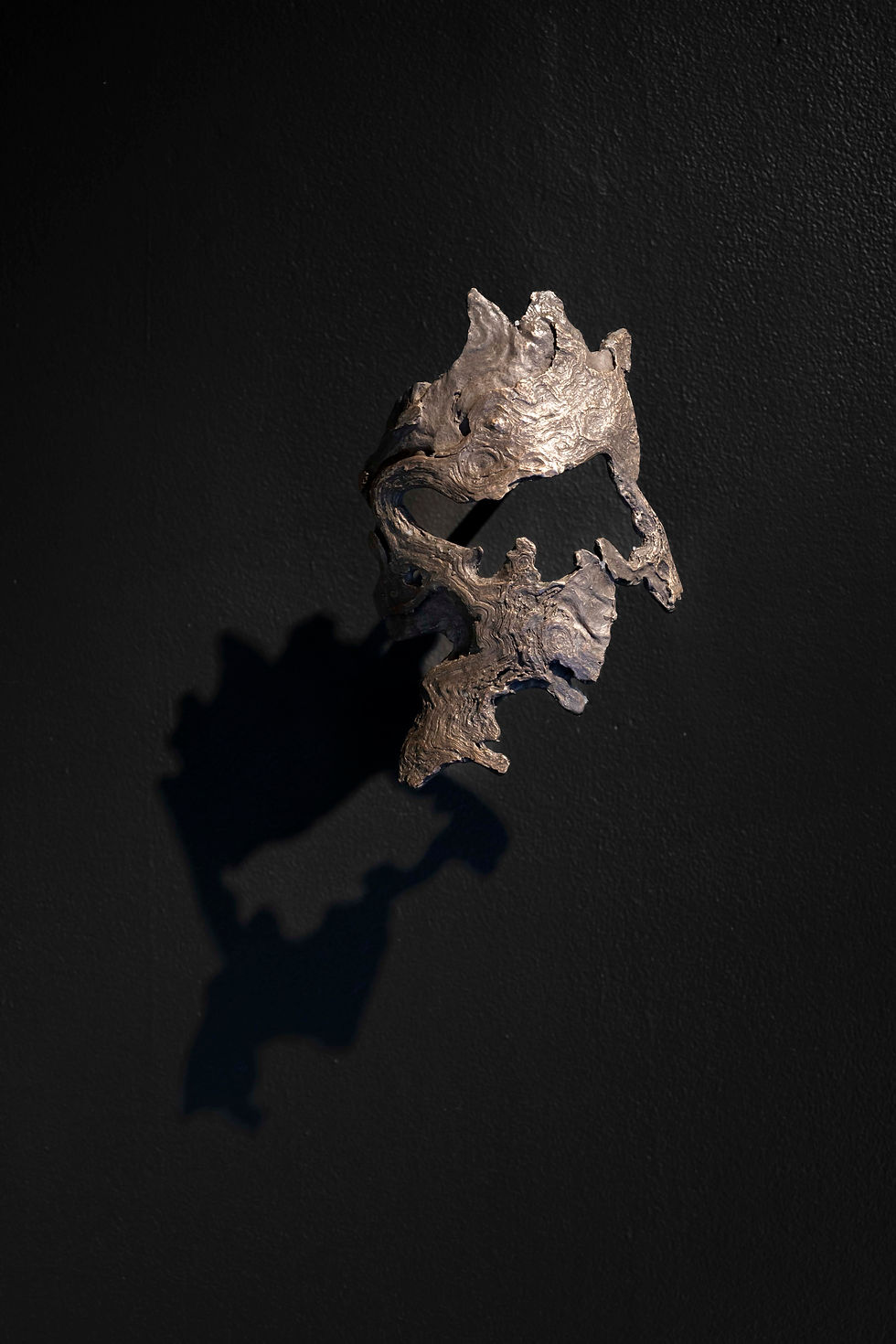A Community, United
- Cris Bonquin

- Nov 15
- 4 min read
A community, united. One that grows. One that nurtures. That’s what I saw when I stepped into Bianca Tainsh’s Terra Culture.



The name of Tainsh’s exhibition describes the process by which places of habitation are created using resources that are abundant, natural and local. These dwellings uphold an environment where all living inhabitants, whether plant, human or animal, are nurtured and taken care of—a symbiotic “system” of life. Through the title alone, Tainsh proposes a way of living that is communal and mutualistic, a land all too distant from our current extractive, capitalistic reality.
Stepping into the exhibition, I was met with several biome-sculpture hybrids that expose the underground networks which keep the Lake Weyba ecosystem (located on Kabi Kabi country) alive. My first encounter was with Arc Viewer, whose fabricated steel legs raised a biome to my eye level, several feet above the earth it came from, so I could investigate its growth through a glass pane. The Arc’s system is as complex as a train network, mycorrhizal fungi connecting the plants together and distributing nutrients throughout the biome. Above ground, we assume that each plant grows on its own, standing tall and self-made. Instead, the mycelium and plant roots find each other, creating bridges that turn them from strangers into neighbours, hand in hand, nurturing each other’s growth. My eyes travelled around the Arc’s glass pane, following each and every journey its inhabitants took to find each other, until I saw my own reflection. I stared back at someone with their own complex network, whose lymphatic and nervous systems do work around my body to keep me alive.

As I interacted with the other works in Terra Culture, their connected devices responded to me. I saw the screen bloom when I touched Weyba’s soil, and the headphone static turned into crackling as my fingers brushed against Myco-sonification. I felt as though my presence enriched each biome, like I was a steward to their growth, united to their cause.


Collaboration is at the heart of Terra Culture. Tainsh brought in a diverse group of individuals to help produce the exhibition. She worked in collaboration with Jason Kahl of Crafted Bespoke Fabrications to make the steel foundations; with Jarred Wright to create the hand-blown glass vessels that water the biomes; with Finley Wegener to produce the soundtrack that follows your ears as you travel through the space; with Perides Art Foundry to cast the Untitled bronze sculpture. In an ongoing art and science collaboration, Tainsh is working with Professor Janet Wiles (School of Electrical Engineering and Computer Sciences at the University of Queensland) to develop AI that can understand the communication of fungal networks.


In retrospect, I realise that Tainsh produced an environment where creation flourishes. I, as a visitor, can tend to the ecosystem by engaging with the installations and understanding how they affect me. In that little room, it is as though we are in a Terra Culture of our own, nurturing and taking care of each other in a symbiotic system of life. Tainsh unites us in a time of political and social division—something I know all too well as a Filipino.
Forty years after revolting against corrupt martial rule, we have taken to the same streets to protest the theft of our people’s wealth at the Trillion Peso March, fighting to see taxpayer money applied to life-saving flood control projects rather than pocketed by corrupt congressmen. Elections split family lines down the middle as we try to not let misinformation get the best of us. And though we gained independence after over 300 years of colonisation, ghosts from that wretched past possess us to become the very same oppressors we freed ourselves from. We betray the golden brown of our skin by rubbing it away with whitening soap and we think little of our own artists in comparison to Western stars. Our motherland’s waters have long been poisoned—many of us took to foreign seas to find something better. Fifteen years and 6,000 kilometres later, I am now 24 and pessimism over our country’s future is an all too familiar exchange between Filipinos.
It’s easy to feel as though nothing can grow in a world on fire. With nations doing nothing to douse the flames, what can we escape to? Exhibitions like Terra Culture remind us what being united looks like. In a recessive economy suffocating the life out of the arts, Tainsh brought people together to create community against the odds and made something grow on this scorched earth.
I’ll never forget the joy on Tainsh’s face as she reunited with her biomes. I witnessed two beings, living and breathing, exchanging gratitude over their resistance to our current conditions. It was then that I realised our faith in a better future stabilises us in these chaotic times.

I must remember that my ancestors faced the same thing. That they survived by revolting as one body against a system hell-bent on their elimination. It is only by connecting to our past that we can unite in the present and continue the fight for a future worth living for.
Cris is a graphic designer and writer based in Magandjin/Brisbane. His writing gives readers his perspectives on cultural events within Magandjin’s arts community. Outside of his writing, he experiments with mediums like graphic design and photography to develop his artistic practice.

